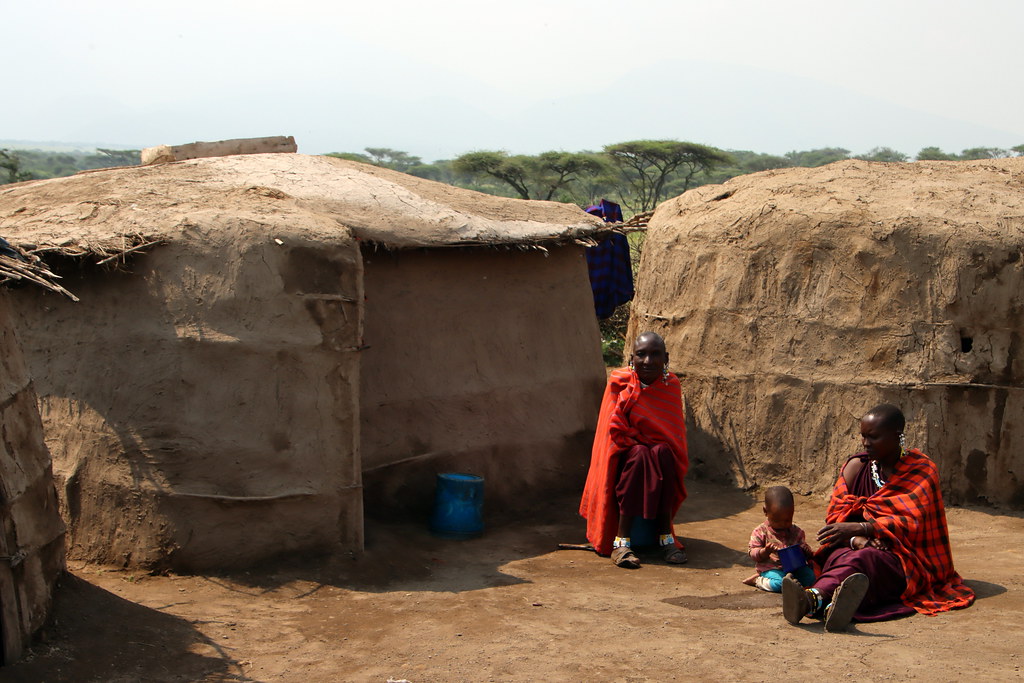
Explore the authentic Masai villages in Kenya and immerse yourself in the Masai culture and people in the Masai Mara.
Explore the authentic Masai villages in Kenya and immerse yourself in the Masai culture and people in the Masai Mara.
Explore the allure of this ancient tribe that resides in the regions surrounding the Maasai Mara in Kenya and northern Tanzania by embarking on a voyage to experience the Masai people and culture in Masai Mara. As we illuminate the reasons why a visit to the Masai people is an absolute necessity during your safari in Kenya, the iconic images of Masai warriors, adorned in vibrant red, purple, and blue patterns, and their fierce women, bedecked in brilliant beaded jewelry, come to life against the backdrop of the African savannah.
The Masai garb and adornments are revealed to be vibrant.
As you enter the village, you are met with a riot of hues that emanate from the vibrant garments, or shukas, that the Masai wear. The contrast between the natural browns and greens of the landscape and these colorful sheets is photogenic. Women, in particular, use these ornaments to convey their identity and social status by adorning themselves with brightly embellished necklaces, bracelets, and amulets. You may have the chance to acquire these handcrafted mementos as a visitor, thereby supporting the village and bringing home a piece of authentic African artistry.
Greetings that are both cordial and enthusiastic
The Masai people take great pride in their traditional way of life, which is concentrated around pastoralism and warriorhood, with cattle playing a crucial role in their culture. The Masai extend a warm and enthusiastic welcome to visitors through song and ritual. Adumu, or the “jumping dance,” is a unique dance that is performed at specific intervals. This entails a central dancer levitating to the rhythmic melodies, while executing graceful jumps that extend several feet in height. Visitors are frequently encouraged to participate in the performance, which contributes to the festive atmosphere of the event.
Village Huts and Dwellings of Interest
Small huts constructed from a combination of mud, cow dung, thatch, and ash constitute the traditional Masai village, known as a Manyatta. These bomas, or huts, are arranged in a circular pattern and serve the dual purpose of safeguarding livestock from potential predators and providing sanctuary for the villagers. These dwellings, which are constructed by the women, demonstrate a distinctive lifestyle in which an entire family shares modest living spaces, occasionally accommodating small livestock. The average size of each boma is approximately 3 x 5 meters, with a height of approximately 1.5 meters. The dimensions of each boma differ.
A renowned nomadic tribe, steeped in tradition
One of the earliest inhabitants of East Africa is the Maasai tribe, which has a history that dates back to the 15th century. Pastoralism and warrior traditions are profoundly ingrained in the daily activities of the Maasai people, who resist modern influences and maintain a nomadic lifestyle. In a Maasai village, a typical day consists of women and girls milking cows and goats, while herders (men) transport cattle for grazing on the extensive Mara plains. The Masai have coexisted peacefully with wildlife for centuries, despite their proximity to predators, zebras, giraffes, and elephants. They maintain a strong aversion to consuming game flesh.
A visit to a Maasai village in the heart of Masai land reveals the tribe’s ancient traditions, where nature and wildlife flourish. We can help you create the ideal itinerary to Masai Mara National Reserve, which includes an immersive experience with the Masai people, if your safari expedition itinerary does not include a visit to a Masai village.


